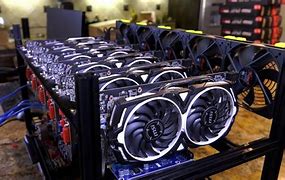Crypto mining is the process by which new cryptocurrency coins are created and transactions are verified on a blockchain network. It involves solving complex mathematical problems using computational power, a method known as Proof of Work (PoW). This process ensures the security and integrity of the decentralized network.
How Does Crypto Mining Work?
In crypto mining, miners use specialized hardware to solve cryptographic puzzles. When a miner successfully solves a puzzle, they add a new block of transactions to the blockchain and are rewarded with newly minted cryptocurrency. This process not only introduces new coins into circulation but also validates and secures transactions on the network.
Types of Crypto Mining
1. Proof of Work (PoW)
PoW is the original consensus mechanism used in cryptocurrencies like Bitcoin. Miners compete to solve complex mathematical problems, and the first to solve the problem gets to add the next block to the blockchain and receive a reward.
2. Proof of Stake (PoS)
In PoS, validators are chosen to create new blocks based3 on the number of coins they hold and are willing to “stake” as collateral. This method is more energy-efficient than PoW and is used by cryptocurrencies like Ethereum after its transition from PoW.
3. Proof of Space
Proof of Space involves proving that a miner has allocated a certain amount of disk space to the network. This method is considered more environmentally friendly as it consumes less energy compared to PoW.
Mining Hardware
To mine cryptocurrencies, miners use specialized7 hardware:
- ASICs (Application-Specific Integrated Circuits): Custom-built machines designed for mining specific cryptocurrencies like Bitcoin.
- GPUs (Graphics Processing Units): Versatile processors used in mining various cryptocurrencies, especially altcoins.
- CPUs (Central Processing Units): General-purpose processors used in early mining but are now less efficient for most cryptocurrencies.
Mining Pools
Due to the increasing difficulty of mining, individual miners often join mining pools. In a pool, miners combine their computational power to increase the chances of solving a block. The rewards are then distributed among participants based on their contribution to the pool’s efforts.
Rewards and Incentives
Miners are rewarded in two main ways:
- Block Rewards: Newly created cryptocurrency coins awarded for successfully mining a block.
- Transaction Fees: Fees paid by users to have their transactions included in a block.
For example, Bitcoin’s block reward started at 50 BTC and halves approximately every four years in an event known as “Bitcoin halving.” As of 2024, the reward is 3.125 BTC per block.
Environmental Impact
Crypto mining, especially PoW, requires significant amounts of electricity, leading to environmental concerns. Bitcoin mining alone consumes a substantial portion of global electricity, contributing to carbon emissions. Efforts are being made to mitigate these impacts by utilizing renewable energy sources and improving mining efficiency.
Future of Crypto Mining
The future of crypto mining is evolving with the development9 of more energy-efficient consensus mechanisms like PoS and Proof of Space. These advancements aim to reduce the environmental footprint of mining activities while maintaining the security and decentralization of blockchain networks.
In conclusion, crypto mining plays a crucial6 role in maintaining the integrity and security of blockchain networks. While it presents challenges, particularly concerning energy consumption, ongoing innovations are paving the way for more sustainable and efficient mining practices.
Also Read:Ethereum Price Prediction 2040: Expert Forecasts & Analysis
